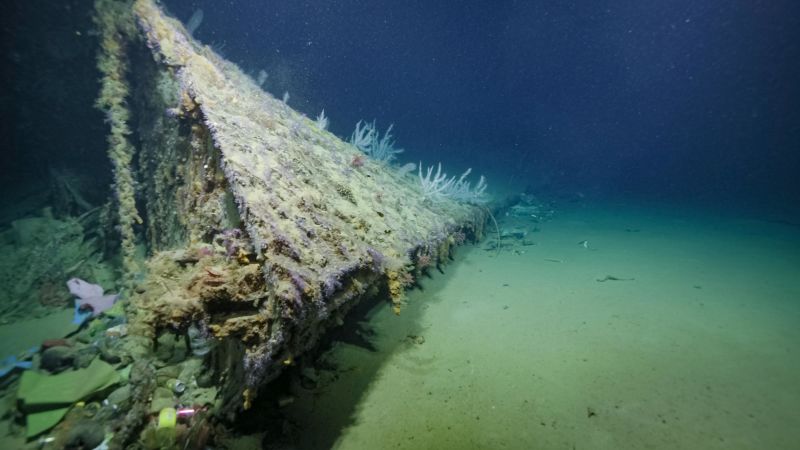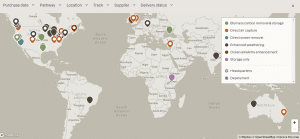The bow of the USS New Orleans, a US Navy cruiser damaged during World War II, has been located more than 80 years after it sank in the Pacific Ocean. The wreckage was discovered at a depth of 675 meters (2,214 feet) in Iron Bottom Sound, situated near the Solomon Islands, by the Nautilus Live expedition from the Ocean Exploration Trust.
On November 30, 1942, the USS New Orleans was struck by a Japanese torpedo during the Battle of Tassafaronga, off the coast of Guadalcanal. The explosion caused significant damage, severing the front 20% of the ship and resulting in the deaths of over 180 sailors from its crew of 900. In a remarkable display of ingenuity, the surviving crew made hasty repairs using coconut logs to create a makeshift bow.
A Historic Journey in Reverse
After the initial repairs, the USS New Orleans embarked on an extraordinary 1,800-mile journey to Australia, navigating in reverse. The crew faced significant challenges, as the ship’s design typically favors forward movement. Retired US Navy Captain Carl Schuster emphasized the difficulty of sailing a warship backward over such a distance, stating, “’Difficult’ does not adequately describe the challenge.”
The ship’s stern, not designed for cutting through waves, would experience significant movement with each swell, complicating steering and maneuverability. This unusual operation required the crew to adapt quickly to new commands and strategies to maintain stability.
Legacy of Bravery and Resilience
Upon reaching Australia, the USS New Orleans underwent permanent repairs before returning to action. It played crucial roles in significant battles across the Pacific, including Saipan and Okinawa, contributing to the defeat of Imperial Japan. Throughout its service, the ship was awarded 17 battle stars, ranking among the most decorated vessels in the Pacific theater.
The recent discovery of the bow sheds light on the ship’s storied past and the resilience of its crew. The expedition, which began on July 2 and continues until July 23, is part of a broader initiative to locate and document military wrecks in Iron Bottom Sound. Historically known as Savo Sound, this area became notorious for the loss of numerous naval vessels during intense battles in 1942, claiming over 20,000 lives.
The Nautilus Live expedition is a collaborative effort involving the National Oceanic and Atmospheric Administration (NOAA), the Ocean Exploration Cooperative Institute, the University of New Hampshire, and the Naval History and Heritage Command. As of now, fewer than 100 military ships and planes from this period have been identified in the area.
This remarkable find not only highlights the bravery of the USS New Orleans crew but also underscores the significance of maritime archaeology in preserving history. The ongoing live streams of the expedition can be accessed at nautiluslive.org, allowing the public to witness the exploration and discovery of this crucial piece of naval history.






















































